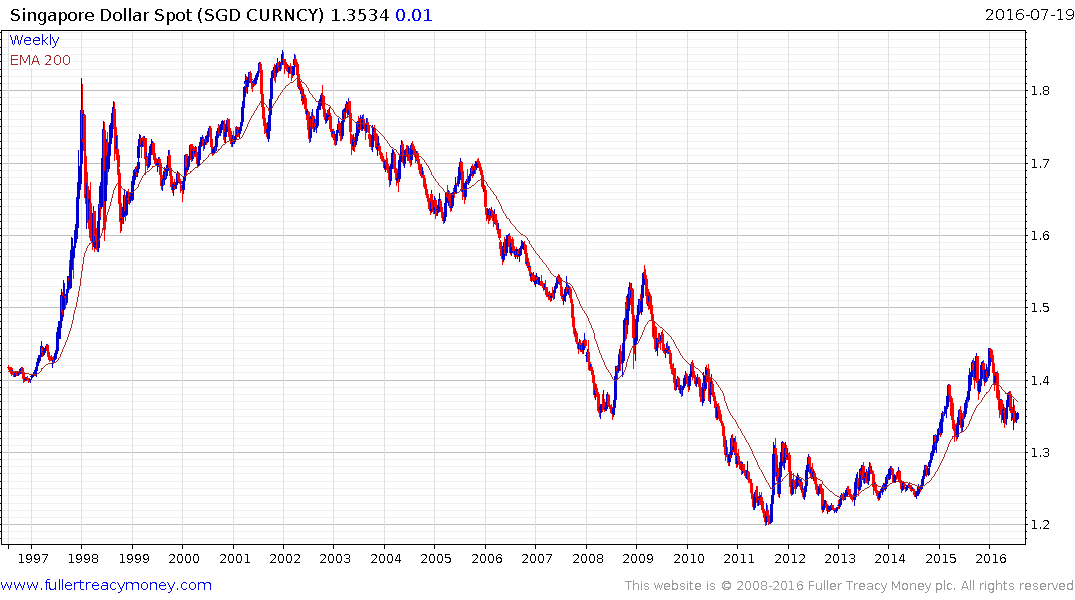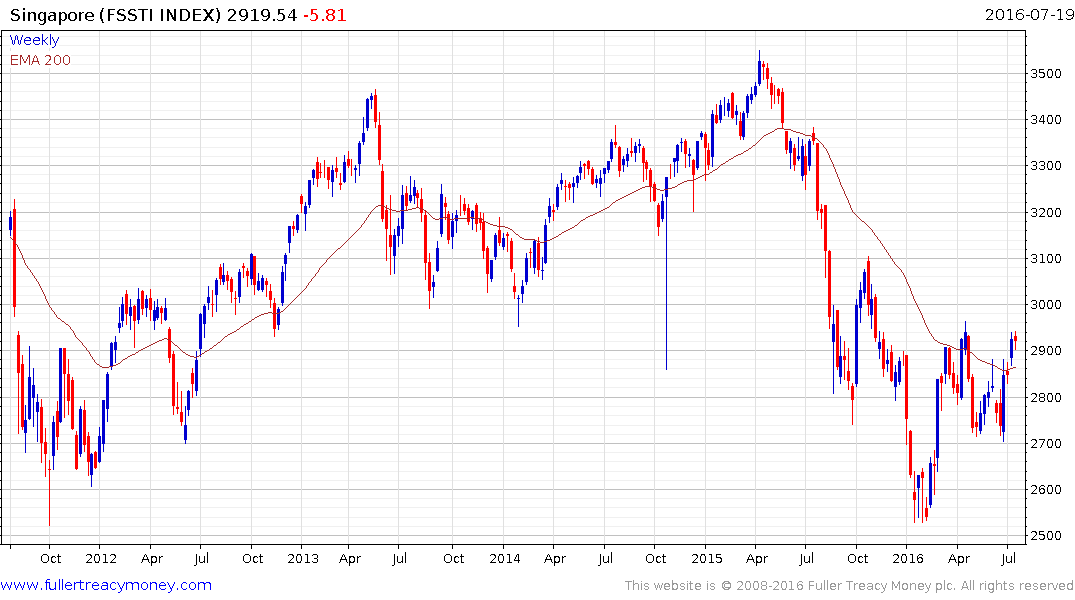The Singapore Fix
This report from Maybank may be of interest to subscribers. Here is a section:
Too much property; curbs could turn permanent
Unless property prices plunge suddenly and dramatically, we think that property-cooling measures may not be lifted. Singapore households have SGD840b of capital or 209% of GDP tied up in residential property. This has resulted in lower disposable income which has impeded consumer spending and muzzled entrepreneurship. Another less obvious implication of property “overinvestment” is that home-price appreciation fuels wage inflation, reducing Singapore’s cost competitiveness. We think turning property-cooling measures permanent could be an effective way to steer investments away from this asset class to more productive uses in the long run, which may be what the government is contemplating. As this would put developers at the losing end, we turn less bullish on the residential property sector and downgrade it to NEUTRAL. Wing Tai and CityDev are most exposed to Singapore’s residential market. Additionally, given the knock-on effects on loan demand, continue to sell banks, which are already grappling with asset-impairment risks and likely fewer lending opportunities. OCBC and DBS are least preferred.Wage pressures: we think government will step in
Short-term relief to wage pressures is required, in our view, as wage growth has outpaced productivity gains. Wages now hit 43.4% of GDP. Historically, such levels preceded a recession, as in 1985, 1997 and 2000. Without intervention, retrenchments could rise. Although cutting CPF rates can offer a direct reprieve, it runs counter to concerns about retirement financial security and may be politically unpalatable. We think that the ideal solution may be for the government to co-pay wages and increase social spending. Businesses could receive a shot in the arm, especially those with high labour content.Boost consumption!
At 37% of GDP, Singapore’s household consumption is one of the lowest among developed countries. What’s more, it has been declining. If a diversion away from property investments and wage relief are successful, we foresee a consumption boost. Such domestic-led growth should be more desirable amid rising anti-globalisation sentiment in parts of the world. Consumer staples could offer the best exposure to this, we believe. We recommend Sheng Siong.
Here is a link to the full report.
Singapore has seen living costs rise precipitously over the last decade with the result the island economy has seen its competitiveness come under pressure. Enhancing standards of living has allowed the PAP to stay in power since 1959 because it has not shied away from central planning supported by world class management of public resources. It will need to continue to deliver on succeeding in making tough decisions that deliver long-term positive results if its record is to be sustained through what is a difficult environment for its major trading partners.

The weakness of the Singapore Dollar between mid-2014 and early this year was symptomatic of some of the challenges facing the economy. However with the strengthening of regional currencies it has steadied this year to break the US Dollar’s medium-term uptrend. A sustained move back above the 200-day MA would be required to question medium-term demand dominance for the Singapore Dollar.

The Straits Times Index pulled back sharply in 2015 but has steadied so far this year and pushed back above the 200-day MA last week. A sustained move below 2700 would now be required to question medium-term scope for continued upside.


